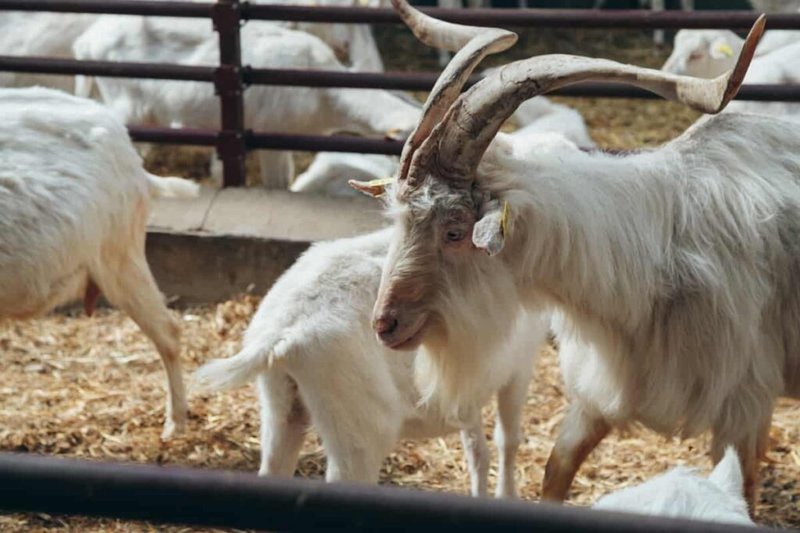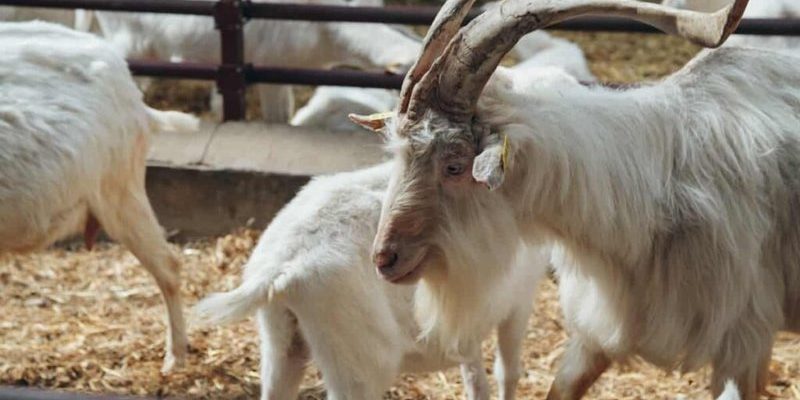
In this guide, we’ll dive into what Kiko goats need for optimal nutrition. We’ll cover everything from their basic dietary requirements to the types of feed that work best for them. Whether you’re a new goat owner or just curious about this fascinating breed, you’re in the right place. Let’s explore how to keep your Kiko goats happy and nourished!
Understanding the Kiko Goat Breed
Kiko goats have unique traits that make them different from other breeds. They’re known for their hardiness and ability to thrive in various environments, which is a huge bonus for any goat owner. These goats have a good temperament and are relatively easy to manage, making them perfect for both new and seasoned farmers.
Originating from New Zealand, Kiko goats were bred specifically for meat production, so they have a naturally robust physique. This means they require a diet that supports muscle growth and overall health. Basically, if you feed them right, you’ll end up with healthy goats that are great for both milk and meat production.
When thinking about their dietary needs, keep in mind that Kiko goats are browsers. Unlike cattle that graze, they prefer to munch on bushes, trees, and shrubs, which can actually help in maintaining your pastureland. So, if you have a property with lots of vegetation, your Kiko goats are likely to thrive!
Basic Nutritional Requirements
Just like people, Kiko goats need a balanced diet to stay healthy. This includes carbohydrates, proteins, fats, vitamins, and minerals. Here’s a breakdown of what they need:
- Carbohydrates: These are essential for energy. Hay and pasture grasses are great sources.
- Proteins: Crucial for muscle growth and repair. Kiko goats need around 12-16% protein in their diet, depending on their life stage.
- Fats: Important for overall health, fats also assist in nutrient absorption. Look for feeds that contain vegetable oils.
- Vitamins and Minerals: These should be provided through a mineral supplement, especially calcium and phosphorus, which are vital for bone health.
You might be wondering how to deliver this balanced diet. It generally comes from a combination of quality hay, pasture, and specially formulated goat feed. A good rule of thumb is to offer a mix of both grazing and supplemented feed.
Choosing the Right Feed
When it comes to feeding your Kiko goats, the type of feed you choose can make a big difference. Not all goat feeds are created equal. Here are some types to consider:
- Grain-Based Feeds: These are energy-dense and great for Kikos, especially if they’re raised for meat. Look for a pellet designed for goats.
- Hay: Good quality hay, especially alfalfa or clover, offers both fiber and nutrients. Just make sure it’s free of mold!
- Pasture: Fresh, green pasture is the best source of nutrition. Just be aware of what plants you have, as some can be toxic.
You may want to mix and match these options to keep your goats interested in their meals. Honestly, just like we get bored of eating the same thing every day, your goats will appreciate a variety too!
Supplementing Their Diet
While Kiko goats can thrive on a good forage diet, supplementation is often necessary to meet their nutritional needs. Here’s where supplements come into play:
- Mineral Blocks: Providing mineral blocks can help ensure your goats get the necessary vitamins and minerals they might miss in their forage.
- Grain Rations: Especially useful during pregnancy or lactation to give the extra boost needed for both the mother and kids (baby goats).
- Probiotics: These can aid digestion, especially if you’re transitioning their diet or if they’re under stress.
Let me explain further: if you’re feeding your Kikos grain or store-bought feed, look for one that’s balanced with added minerals and vitamins. This can give them a significant nutritional boost, especially during critical life stages.
Feeding Schedule and Portions
Setting a consistent feeding schedule is important for Kiko goats. Just like we thrive on routines, so do they! You should aim to feed them twice a day.
In terms of portion sizes, here’s a general guide:
- Hay: Offer about 2-4% of their body weight daily.
- Grain: Limit grain to about 1-2 pounds per goat daily to avoid overfeeding, which can cause digestive issues.
- Fresh pasture: Allow them to graze as much as possible, but monitor their intake to prevent overeating.
You might find that Kikos eat more in cooler months when they need more energy to stay warm. Just keep an eye on their body condition; if they start looking too thin or too hefty, adjust their feed accordingly.
Common Feeding Mistakes to Avoid
Even seasoned goat owners can make feeding mistakes. Here’s what to look out for:
- Overfeeding Grain: Too much grain can lead to ruminal acidosis, a serious digestive issue. Stick to the recommended amounts.
- Ignoring Fecal Health: Pay attention to their droppings. Changes can indicate dietary issues or health problems.
- Neglecting Water: Always provide fresh, clean water. Dehydration can lead to a range of health issues.
Here’s the thing: keeping an eye on your goats and their behavior after meals can provide insights into their health. If you notice anything odd, it’s best to consult a veterinarian.
Feeding and nutritional needs of Kiko goats may seem complex at first, but once you get the hang of it, it’s much easier than it looks. By focusing on a balanced diet that includes good forage, quality supplements, and a consistent feeding schedule, you’ll ensure your goats are healthy and thriving.
Remember, these amazing creatures have specific needs that, if met, lead to happier goats and better production. So, take the time to learn what works best for your Kiko goats, and you won’t regret it! Happy goat farming!

